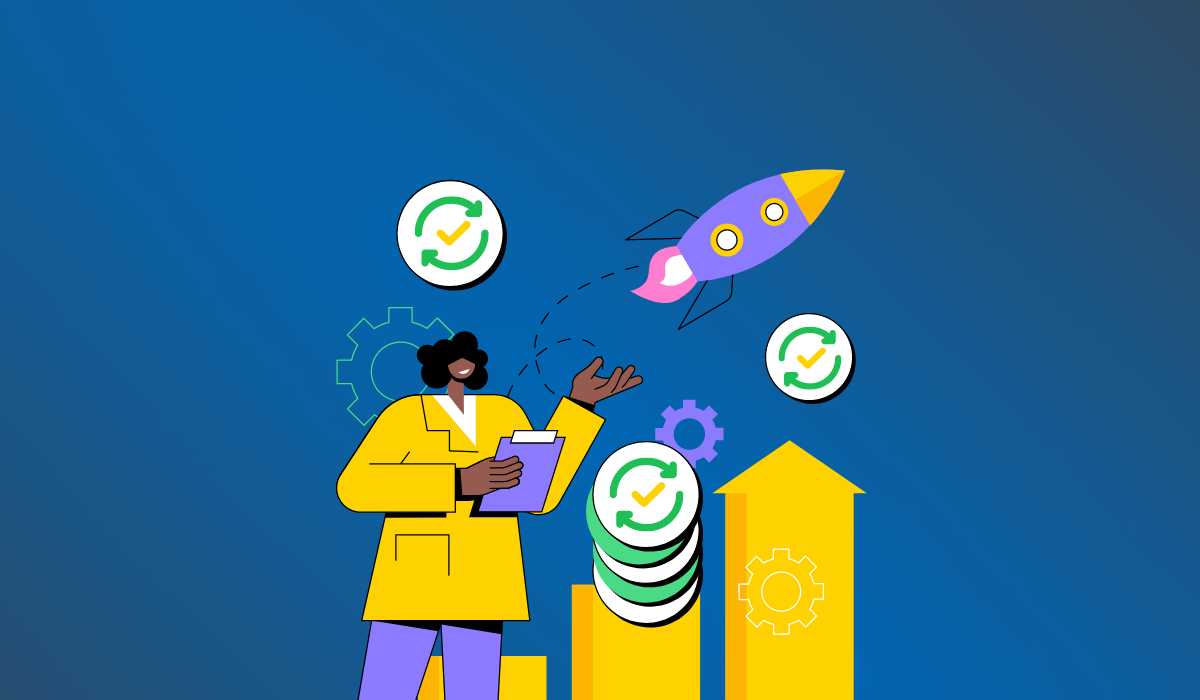Getting Started With Marketing Automation
Even with the wealth of information available online, marketing automation can be quite difficult to wrap your head around.
While it’s intended to make your marketing efforts easier to execute and improve, at the end of the day there is an inevitable learning curve that will cost you time and effort. That being said, once you get the basics down, the positive impact that marketing automation makes on your bottom line is hard to pass up.
The Annuitas Group previously reported that marketing automation has led to an average 451% increase in qualified leads. Gartner Research suggests that automated lead management sees upwards of a 10% increase in revenue within 6 to 9 months. Forrester Research has noted that successful lead nurturing generates 50% more sales-ready leads at a third of the cost.
But before you go around subscribing to all the latest software plans, you need to make sure that your automation strategy is a good fit for your business.
What is marketing automation?
Simply put, marketing automation is the process of using technology to carry out repetitive tasks. This could mean anything from sending out emails to analyzing performance data, to collecting information that will help you build a stronger relationship with your market.
There are many more applications, but what you hope to achieve in a nutshell is to:
- Generate more qualified leads
- Engage with prospects and customers more effectively
- Track the performance of your marketing efforts
- Analyze results so you can improve your campaigns
To help you be a little more focused as you dive into this incredibly extensive area of expertise, we’ve put together a brief step-by-step guide for you to keep in mind.
Taking your first steps into marketing automation
1. Get your contacts in order
This is the most important first step that you will have to take when getting into marketing automation. You have to find an easy-access place to house your contact lists because this is the real fuel for your automation efforts.
No matter how many creative email sequences or automated responses you build, few of your efforts will both execute and provide value to your business if you can’t feed your system with contact emails.
Moreover, most of the top automation software today requires that you make use of the contact database that exists on their platform. For example, HubSpot and ActiveCampaign rely on their respective lead capture tools such as forms and CTAs to generate more contacts that will trigger your automated campaigns.
Taking it a step further, platforms now offer incredibly granular ways of segmenting your lists, enabling you to send highly targeted messages to the right people at the right time.
Just make sure that you validate the emails in your contact list if you’re migrating from an external database. Not only does this protect the validity of the data that your campaigns generate, it also helps in fraud prevention and boosting your sender reputation.
2. Create a funnel
Effective automation means building a journey for potential and existing customers. For any brand, reputation precedes revenue, and building a relationship of trust between you and the people you want to patron your products and services takes time.
This is where the funnel comes in. You need a framework for your digital presence so you can identify what can and should be automated. There are so many ways of categorizing the different phases in a lifecycle, but essentially you are looking at three main concepts:
3. Awareness
The first impression. This is how you first enter the mind of your consumer. SEO blogs, social media content, and other front-facing materials are critical for lead generation. Lead generation is the first step you’ll need to take before your marketing automation can kick in and create results.
4. Engagement
Whether they’re aware of you, interested in what you offer, or already at the point where they are considering spending money, these are all part of your lead nurturing process.
There is no such thing as an absence of competition in this day and age, so you have to be particular about what makes you standout. Once you have your contacts in order, you can begin to send targeted messages that truly matter to them, instead of blasting them weekly catalogs of things they were never interested in the first place.
Take a look at what kind of daily challenges your leads are faced with and consider gearing your efforts towards helping them solve these problems even if they are not yet ready to purchase from you.
Think of this stage as the wining and dining.
5. Conversion
At any stage in the customer journey, it is best practice to consider the nitty-gritty details of how you will get them to the next step. Once they know about you, how are you going to capture their information so you can begin sending them content? Once they’ve become interested in your offers, how do you get them to actually buy?
6. Plan and create content
At the end of the day, marketing automation is just a tool for eliminating iterative tasks and opening up new opportunities for increasing productivity. What will really set you apart from your competitors is your brand story. It’s not a simple matter of creativity either. What’s really important is how well you know your audience and how you can adapt all of your communications to best suit them.
7. Analyze, analyze, analyze
The beauty of marketing automation is how It sets you up for future success. As with any digital technology, your efforts will generate performance data that will let you revisit what you’re doing at regular intervals, so that you can apply the right tweaks that will improve performance.
Finding success with marketing automation
It’s always good to keep a business-first perspective when getting into marketing automation. Always make sure that your efforts link back to your actual objectives instead of just aiming for vanity metrics just-for-the-sake-of.
You might be getting excited to immediately invest in all the integration options that each platform has to offer, but if it doesn’t serve to impact your bottom line, then do you really need it?
And if you do need it, are you ready to dive into the overwhelming number of bells and whistles that will present themselves before you?
When in doubt, you can always consult the experts. At Inbound AV, we offer free consultation on marketing automation solutions and if you’ve decided it’s the path for your business, we can even help set you up for success and future growth.





.png)

